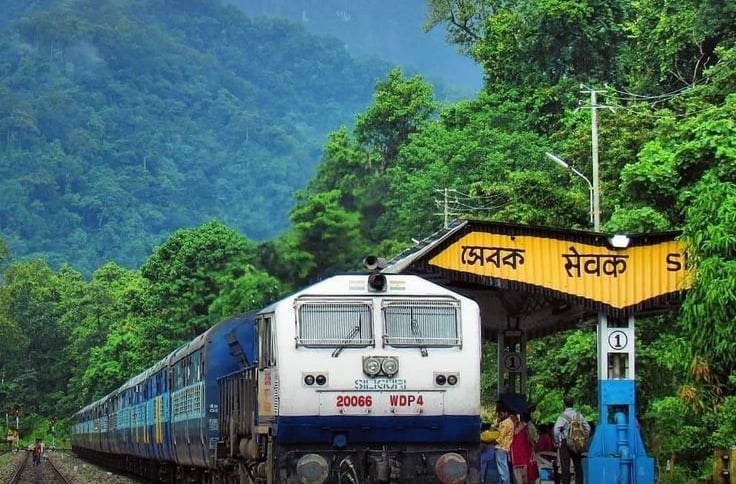Kannauj railway station collapse
On January 11, 2025, an under-construction lintel at Kannauj Railway Station in Uttar Pradesh collapsed, trapping several workers. Rescue operations saved all trapped individuals, with no fatalities reported. Investigations are underway to determine the cause.
POLITICS
1/17/20253 min read


Kannauj Railway Station Collapse: A Tragedy That Could Have Been Prevented
On January 11, 2025, a tragic incident unfolded at Kannauj Railway Station in Uttar Pradesh, shaking the foundation of infrastructure safety in India. A ceiling slab of an under-construction building collapsed during renovation work, leaving several injured and raising critical questions about negligence and accountability. This incident is not just a local issue but a reflection of broader systemic flaws.
The Incident
The collapse occurred early in the morning when workers were laying the ceiling slab of a two-story building as part of an ambitious renovation under the Amrit Bharat Scheme. At the time of the incident, around 40 workers were present. The chaos that followed was heart-wrenching, as rescue teams worked tirelessly to save lives. Fortunately, no deaths were reported, but six workers were seriously injured and required advanced medical attention. Many others suffered minor injuries, highlighting the need for immediate medical support.
Why Did It Happen?
The incident exposes glaring lapses in construction safety protocols. Preliminary investigations suggest negligence in project supervision and possibly substandard materials. Large-scale projects often suffer from a lack of accountability due to the involvement of multiple contractors and subcontractors. In many cases, cost-cutting measures overshadow the safety and well-being of workers.
Moreover, the haste to complete projects under government schemes like Amrit Bharat, meant to revamp railway infrastructure, often leads to compromised safety standards. It is a reminder that fast-tracked development must not come at the cost of human lives.
The Aftermath
The immediate response involved a large-scale rescue operation. While the state government acted swiftly by announcing financial aid of ₹2.5 lakh for the seriously injured and ₹50,000 for minor injuries, the incident leaves behind scars that go beyond monetary compensation.
This collapse has also ignited a political debate. Opposition leaders, including Samajwadi Party chief Akhilesh Yadav, criticized the ruling government, alleging corruption and negligence. Public trust in government-led projects is now under scrutiny, with many questioning the transparency and oversight mechanisms in place.
Who Is Responsible?
Responsibility for this tragedy lies at multiple levels. Contractors, often selected through a bidding process, may prioritize profits over safety. Supervising engineers and project managers are equally culpable if they fail to enforce safety standards. Additionally, systemic issues, such as corruption and inadequate oversight by government authorities, contribute significantly to such incidents.
What Needs to Change?
This incident must serve as a wake-up call for policymakers and project managers. Infrastructure projects, particularly those involving public spaces like railway stations, must adhere to the highest safety standards. Regular inspections, use of quality materials, and accountability at every level are non-negotiable.
The government must also consider empowering independent safety auditors for real-time monitoring of large-scale projects. Workers, often the most vulnerable stakeholders, should be given basic training on safety measures and access to protective gear.
Why Naming the Injured Matters
In incidents like these, revealing the names of the injured serves multiple purposes. First, it humanizes the tragedy by acknowledging the individuals affected, rather than treating them as mere statistics. Second, it allows the public and media to hold authorities accountable, ensuring that promises of compensation and medical care are fulfilled.
Unfortunately, reports so far have failed to provide specific names or detailed updates on the conditions of the injured. This lack of information raises concerns about whether their families are receiving adequate support, both financially and emotionally.
Compensation: A Necessary Step, But Is It Enough?
The Uttar Pradesh government announced financial assistance of ₹2.5 lakh for those seriously injured and ₹50,000 for those with minor injuries. While this is a welcome step, questions remain:
1. Timely Disbursement: Has the compensation reached the affected families? Delays in such payments are common in bureaucratic processes, leaving victims and their families struggling.
2. Sufficiency: Is the compensation enough? For workers with severe injuries requiring prolonged medical care, ₹2.5 lakh may cover only a fraction of the expenses. Families may also face long-term financial hardship if the injured individuals are unable to return to work.
3. Wider Support: Beyond monetary compensation, what psychological and social support are the families receiving? Traumatic events like these often leave lasting emotional scars, particularly for the families of the injured.
The Human Cost
Workers involved in construction projects are often daily wage laborers, many of whom are the sole breadwinners for their families. A workplace injury or death plunges these families into financial instability. The government and contractors owe it to these individuals to provide not just immediate compensation but also long-term support, including employment opportunities for affected families.
A Way Forward
The Kannauj Railway Station collapse is a tragedy that should never have happened. It underscores the need for a balanced approach to development—one that prioritizes safety, transparency, and accountability. Moving forward, it is crucial to learn from this incident and ensure that infrastructure projects truly serve the people without compromising their safety.
This is not just about rebuilding a railway station; it is about rebuilding trust, ensuring justice, and setting a precedent for safer, more responsible development in India.